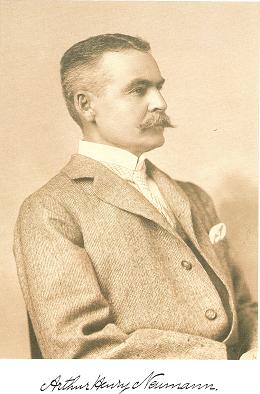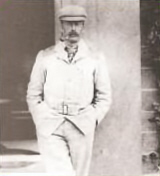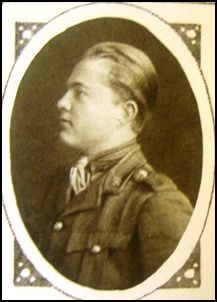John Guille Millais facts for kids
Quick facts for kids
John Guille Millais
|
|
|---|---|

Johnny Millais c. 1900
|
|
| Born | 24 March 1865 Perth, Perthshire, Scotland
|
| Died | 24 March 1931 (aged 66) Horsham, West Sussex, England
|
| Known for | Painting, sculpture, ornithology, gardening |
|
Notable work
|
Natural History of British Feeding Ducks; Mammals of Great Britain and Northern Ireland; Biography of John Everett Millais. |
| Spouse(s) | Frances Margaret Skipworth |
| Awards | Fellow of the Zoological Society of London (FZS) |
John Guille Millais (pronounced MIL-ay) was a British artist and naturalist. He loved drawing animals and plants. He traveled the world to study wildlife. His drawings were very detailed and accurate. He was also a gardener and writer.
Contents
Early Life and Nature's Call
John Guille Millais was born on March 24, 1865. His father was Sir John Everett Millais, a famous painter. John grew up in London and Scotland. He was very interested in nature. This included gardening, hunting, and studying wild birds.
As a boy, he collected birds from the Scottish coast. He wrote about this in his book "The Wildfowler in Scotland". Later, he built a private museum in Horsham, England. It held about 3,000 animal specimens. Some of these specimens appeared in his father's painting, The Ruling Passion. John Guille even painted a bird in his father's painting Dew-Drenched Furze.
Exploring the World
Millais first joined the army with the Seaforth Highlanders. After six years, he left to travel the world. He wanted to see, record, and paint nature. He traveled widely in Europe, Africa, and North America. In the 1880s and 1890s, he explored Canada and Newfoundland. He also helped map unknown areas of Alaska.
In 1903, Millais helped start a group called the Society for the Preservation of the Wild Fauna of the Empire. This group worked to protect wild animals. In 1909, he also helped create the Shikar Club. This was a club for hunters to meet and share their passion. Famous hunters like Frederick Selous were members.
During World War I, Millais worked for the Royal Navy's secret service. He was in Norway and Iceland. He helped with counter-espionage, which means stopping enemy spies. He was a British Vice-Consul in Hammerfest, Norway. He worked to set up a network against spies. Norway was important for shipping food and materials to Britain. Millais reported that many Norwegians supported Germany. In 1917, he narrowly escaped capture by Germans.
After the war, Millais wrote a book about his travels and hunting. It was called Wanderings and Memories. It shared his love for hunting and his childhood in Scotland. This book was reprinted many times. In 1921, he traveled with his son Raoul Millais to southern Sudan. They mapped large areas of Bahr al Ghazal. This adventure led to his book Far Away Up The Nile.
Art and Nature Studies
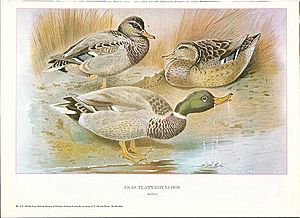
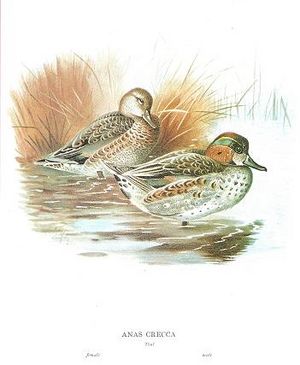
Millais is known as one of Britain's best bird artists. Between 1890 and 1914, he wrote many books about birds and nature. He was famous for his detailed drawings of wildfowl and game birds. His most famous works include Natural History of British Feeding Ducks and British Diving Ducks. These books are considered some of the best ever published on wildfowl.
Each bird in his books was carefully described and drawn. Many drawings were detailed chromolithographs. Some were even done by his friend, the bird artist Archibald Thorburn. Each bird species was shown in different poses. These included feeding, resting, and courtship.
Millais's books were very grand and expensive. Only 400 to 600 copies were printed. They are now highly valued. His son Raoul said his father was "an astonishing man." He could focus on a subject until he knew more about it than anyone else.
For his book Mammals of Great Britain and Ireland (1904), he spent months with whaling ships. He wanted to study whales firsthand. This book also included drawings by George Edward Lodge and Archibald Thorburn.
Millais also became an expert on rhododendrons, azaleas, and magnolias. He published two books on rhododendrons starting in 1917. These books had beautiful color plates of plants from his home. He learned about growing rhododendrons from his neighbor, Sir Edmund Loder.
Besides nature, Millais wrote biographies of his father and Frederick Courtney Selous. He also made sculptures of birds. One sculpture of fighting game birds is now at the Horsham Museum.
Family Life and Gardens
Millais married Frances "Fanny" Margaret Skipworth. They settled in Horsham, West Sussex. They had four children: Daphne (born 1895, died 1904), Geoffroy "George" (born 1896, died in war 1918), Raoul (born 1901), and Rosamond (born 1904). Raoul later became a well-known artist.
In 1900, Millais built a house called Compton's Brow in Horsham. Here, he created a private museum. It held 14,000 specimens. His collection included big game, deer, waterfowl, bats, and seals. It even had a grizzly bear and a huge salmon. He constantly drew and painted his collection. Millais would often travel for months to hunt and collect more specimens.
At Horsham, Millais also created a beautiful garden. He grew new types of rhododendrons. He even named some after his wife Fanny and daughter Rosamond. In 1917, he published his first book on rhododendrons. In 1923, he won the Loder Rhododendron Cup. In 1927, he received the Victoria Medal of Honour for his gardening work. His last major book, Magnolias, was published in 1927.
His son Raoul remembered their home as busy and lively. He described his father as "enormously intelligent" and full of energy. After Millais died, the house and garden did not survive. However, some special plants were saved. They were replanted in Windsor Great Park by his nephew. His large collection of animal skins was sold. The local Horsham Museum still has some skins and sculptures.
John Guille Millais had a special talent for showing the beauty of nature through his art. He died in Horsham on his 66th birthday.
See also
 In Spanish: John Guille Millais para niños
In Spanish: John Guille Millais para niños


